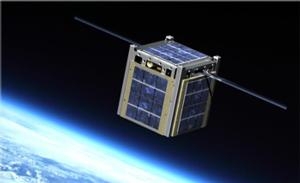New Applications Drive $60 Billion Communications Satellite Market
With demand for satellite communications increasing, manufacturers are expected to produce more than 430 satellites over the next 10 years, according to Forecast International.

The company's new study "The Market for Commercial Communications Satellites" reports that, during the 2015-2024 forecast period, the value of production of this market will be an estimated $60.2 billion. The study covers some 61 satellite production programs.
Sample products in this aerospace segment include the Airbus Defence and Space Eurostar, the Boeing-702, the Lockheed Martin A2100, and the Thales Alenia Space Spacebus.
William Ostrove, the study's author, notes that the market for data and connectivity continues to grow. Fiber-optic and cellular phone networks, as well as communications satellites, continue to be built to meet this demand.
The study highlights a number of areas of potential growth that could prove lucrative for commercial communications satellite operators. These are mobile communications, high-definition TV and video transmission, broadband Internet service, government services, and maritime automatic identification services (AIS). There could also be increased demand for satellite-provided airborne and maritime Wi-Fi services.
Developing markets are another source of growth opportunities for satellite operators and manufacturers. Latin America and the Middle East, for example, have yet to be saturated with terrestrial networks, leaving them open to new satellite services. Countries are also turning to satellites for additional capacity.
"Because governments cannot meet their communications needs entirely with their own satellite fleets, they often supplement their satellite capacity with capacity from commercial satellite operators," said Ostrove. "The reduction in government spending, as governments around the world attempt to balance budgets, will result in continued reliance on commercial satellites."
Going forward, manufacturers will need to include in their offerings the new satellite technologies that have been introduced in recent years. Among these are High Throughput Satellites (HTS), which use spot beams and frequency reuse to provide significantly more capacity than traditional satellites. HTS enables satellite operators to provide modern services such as broadband Internet connections using fewer satellites. Another technology is all-electric propulsion. According to Ostrove, "The lack of chemical propulsion systems means the satellites don't need to carry large stores of fuel, reducing launch mass and therefore launch costs."
The competitive environment will continue to provide both threats and opportunities to satellite manufacturers. On the plus side, U.S.-built satellites have been moved from the munitions list, which requires a Defense Department review of satellite exports, to the Commerce Control List, which is managed by the more export-friendly Commerce Department. Export credit agencies, which provide government-backed loans or loan insurance, have been the engine driving the export of satellites from manufacturers in the U.S., France, and China. Communications satellites compete with each other and terrestrial services for a portion of spectrum.
The top manufacturers in the commercial communications satellite industry over the next decade will include Space Systems/Loral (owned by MDA), Airbus Defence and Space, Boeing, Thales Alenia Space, and Lockheed Martin. These companies are forecast to garner a combined $23.3 billion in commercial communication satellite sales over the next 10 years, accounting for a market share of about 40 percent.
(Image from NASA)
 Airbus Racer Helicopter Demonstrator First Flight Part of Clean Sky 2 Initiative
Airbus Racer Helicopter Demonstrator First Flight Part of Clean Sky 2 Initiative Diamond's Electric DA40 Finds Fans at Dübendorf
Diamond's Electric DA40 Finds Fans at Dübendorf ANN's Daily Aero-Term (04.23.24): Line Up And Wait (LUAW)
ANN's Daily Aero-Term (04.23.24): Line Up And Wait (LUAW) NTSB Final Report: Extra Flugzeugbau GMBH EA300/L
NTSB Final Report: Extra Flugzeugbau GMBH EA300/L Classic Aero-TV: 'Never Give Up' - Advice From Two of FedEx's Female Captains
Classic Aero-TV: 'Never Give Up' - Advice From Two of FedEx's Female Captains



